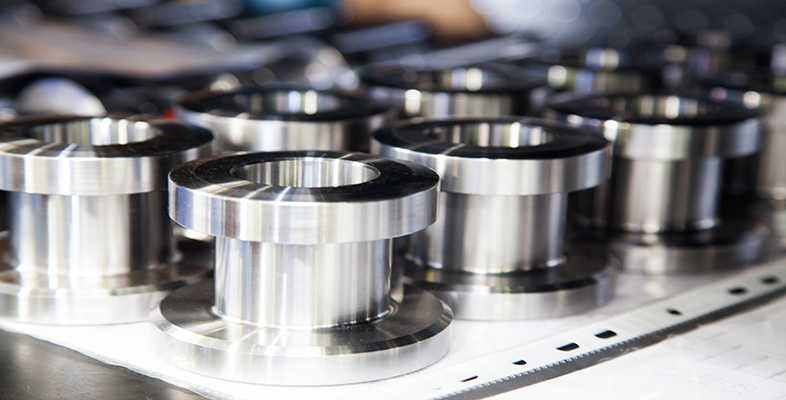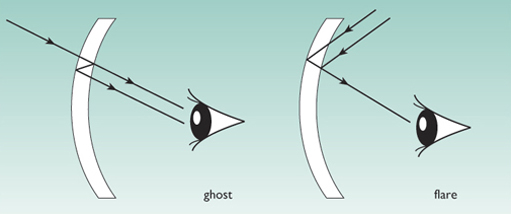7.11 Anti-reflective coatings
In a normal lens, about 4 per cent of the light is reflected as it passes through each side of the lens. This means that approximately only 92 per cent of the light reaches the eye. Some of the reflected light can form a ghost image by reflecting off the reverse side of the lens back to the front and then reflecting off the front into the eyes, as shown in Figure 58. An additional problem can arise from flare which is caused by light entering from behind the lens and then being reflected off the front side of the lens. Both ghost and flare affect the quality of the image that you see.
Anti-reflective coating improves the light transmission through the lens to nearly 99 per cent and therefore can reduce the effects of ghost and flare substantially.
Anti-reflective coatings can be applied using a variety of different methods, and again PVD is popular. The coating can be made up from compounds such as silicon dioxide (SiO2), zirconium dioxide (ZrO2) and aluminium oxide (Al2O3). PVD methods allow the coating to be applied in a number of layers and the refractive index and the thickness of each layer can be carefully controlled. Despite the coating consisting of six or more layers, the final thickness of an anti-reflective coating is usually only ~0.2 μm.
Scratch resistant and anti-reflective coatings on spectacles are an area where there is a highly competitive market, and many of the coatings are carefully patented. Each optician often offers their own version which has a registered trademark associated with it and you will generally find it difficult to find out exactly what treatment your lenses receive!

